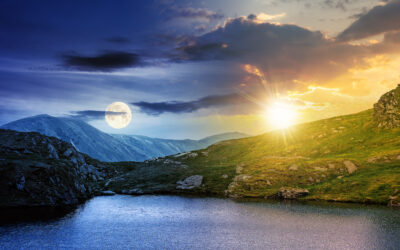Octopuses are among the most fascinating and intelligent creatures in the ocean, and their anatomy is just as remarkable. One of the most surprising facts about octopuses is that they have three hearts. Yes, three!
An octopus’s circulatory system is specially adapted to support its complex lifestyle. Two of its hearts, known as branchial hearts, pump blood to the gills, where oxygen is absorbed. The third heart, called the systemic heart, pumps oxygenated blood to the rest of the body. This efficient system helps the octopus manage its high metabolism and active hunting lifestyle.
Interestingly, when an octopus swims, the systemic heart temporarily stops beating, which can make swimming more tiring for the animal. This is why octopuses often prefer to crawl along the ocean floor rather than swim. The extra effort required for swimming, combined with the stopping of the systemic heart, means that these creatures tend to reserve energy by moving slowly or staying in one place.
In addition to their unique hearts, octopuses have blue blood. Unlike humans, whose blood is red due to iron-based hemoglobin, octopuses have copper-based hemocyanin in their blood, which is more efficient at transporting oxygen in cold, low-oxygen environments like the deep ocean. This gives their blood a bluish tint and allows them to thrive in extreme underwater conditions.
Octopuses’ incredible physiology extends beyond their circulatory system. They are known for their intelligence, problem-solving abilities, and even tool use. Their soft bodies, devoid of any bones, allow them to squeeze into incredibly tight spaces, making them master escape artists in aquariums. They also have the ability to change color and texture, blending into their surroundings to evade predators or communicate with other octopuses.
The next time you see an octopus at an aquarium or in a nature documentary, remember that you’re looking at one of the most unique creatures on Earth—complete with three hearts, blue blood, and a brain as impressive as its body. This combination of physical and mental prowess has made the octopus a subject of fascination for scientists and animal lovers alike.
Related Articles
The Science of Spring Equinox—A Balance of Day and Night
The spring equinox, which occurs around March 19–21, is a celestial event when day and night are nearly equal in length across the globe. This happens because the Earth’s axis isn’t tilted toward or...
The History of Green Beer—A St. Patrick’s Day Tradition
Green beer is a St. Patrick’s Day classic, but you might be surprised to learn that it wasn’t invented in Ireland—it was actually created in the United States! The first known instance of green beer...
The History of the Lucky Rabbit’s Foot—A Strange Superstition
The rabbit’s foot has long been considered a symbol of good luck, but its origins lie in ancient folklore and magic. Some cultures believed rabbits were supernatural creatures due to their burrowing...





